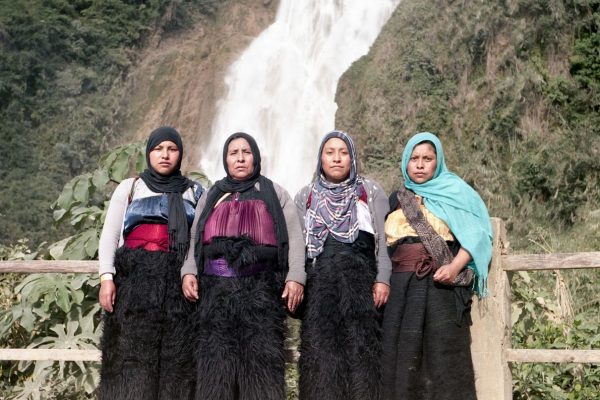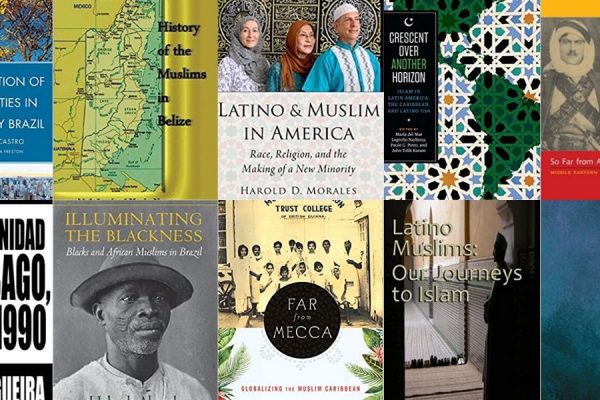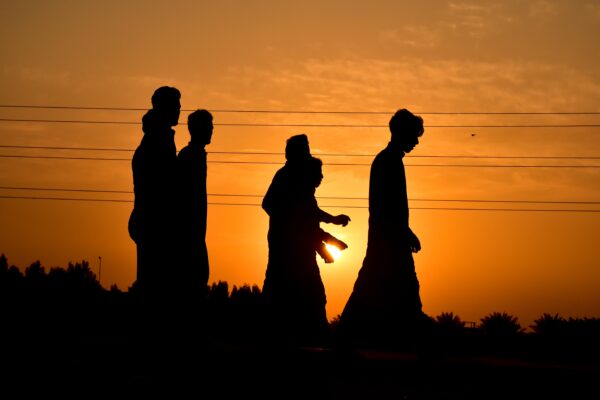“Christianity teaches you to be passive; Islam teaches you to be active. The Spanish introduced Christianity in Latin America to pacify the local people; with it, they justified colonialism and oppression.”
“Christianity teaches you to be passive; Islam teaches you to be active. The Spanish introduced Christianity in Latin America to pacify the local people; with it, they justified colonialism and oppression.”
Islam is the fastest-growing religion in the world. Although this is mainly because Muslims have higher birth-rates than others (on average), it is also partly because a large number of people have reverted to Islam in the last half-century. Some see this statistic as an existential threat – it is the bedrock for the narrative that ‘the Muslims are taking over’. Before proceeding, I’d like to clear something up:
This narrative stems from a mistaken belief that ‘the Muslims’ are a singular entity, whose interests and histories are perfectly aligned. In reality, the Muslim community is incredibly diverse and decentralised.
If we talk about ‘the Muslims’ as a homogenous entity, we lose the nuance that every single Muslim is different. This is especially problematic for reverts: we forget that each revert has their own struggle, their own journey, and their own reasons for reverting.
Why Buenos Aires?
I’ll now answer your first question.
Usually, academic research on Muslim communities focusses on the ‘Muslim World’ or, more recently, the ‘Western World’. However, sociologists and anthropologists are increasingly extending their study to other areas that are still significant but lesser-known. Buenos Aires is a perfect example of this:
There are roughly the same number of Muslims in Buenos Aires as there are in New York, yet we know next to nothing about the community in Buenos Aires [1].
Reverts constitute a surprisingly large part of the Muslim community there. This article interspaces the broader trends in the revert community with examples of personal experiences. So, based on recent academic research, here are EIGHT features from the Buenos Aires revert experience:
1. The universality of Islam
One of the most attractive features of Islam for Latin Americans is its universality. In Islam, “people from diverse cultural and geographical settings may be participants in a divine plan”, which means that any potential revert can look to Islam and find a purpose within it [Siebzehner, 2019] [2].
This feature is particularly important when compared to other religious conversion movements in Buenos Aires – for example, the city’s second-largest conversion movement is into Judaism, but the only potential candidates for conversion (‘Teshuva’) are irreligious individuals with Jewish heritage. Those without Jewish heritage feel “excluded from” Judaism; here, Islam is particularly appealing.
Nino, a recently converted man in Buenos Aires, quoted a phrase from a book he was reading:
“The Final Book of God and the Final Messenger stand today as a repository of this truth, and they invite the whole of humanity to accept the truth.”
More generally, Argentinean reverts to Islam are overwhelmingly citizens without Muslim or Arab ancestry – this fact calls into question the claim that Islam is just an inherited ancestral belief in Latin America. In 2000, the average Muslim in Buenos Aires was probably a “middle-aged man of Syrian descent”; today, the average Muslim is ‘much more likely to be a young Latino or a Senegalese immigrant’ [Montenegro, 2013]. In recent years, a generation of Argentinian sheikhs has replaced the previous religious leaders who emigrated from Arab countries.
2. The ‘deficiencies’ of Catholicism
At least three-quarters of the population of Buenos Aires is Christian; most of them are Catholics. More and more Catholics are reverting and joining the Muslim communities in the city. Although reverts named a wide range of reasons for this, a couple of issues with Catholic dogma consistently came up [Siebzehner, 2019] [3]:
Firstly, many reverts left Catholicism in search of direct contact with a God that is always present and easily accessible; in Catholicism, the Church is a mediator between God and the individual and one must confess their sins to priests in order to be forgiven. One revert said:
Why do I have to enter a church and pray to a figure? Nobody really knows if Jesus was like that, … you ask yourself these questions, and you enter a mosque and you see that there are no images. You say, ‘good’. You do not need an intermediary, or have a totem standing there … The connection is more personal, more intimate. At that moment, you have the possibility to connect with religion and connect with God without having to resort to a physical space to do so.”
Secondly, many distanced themselves from what they considered a problematic approach to monotheism expressed in the Trinity [Jawad, 2006] [4]. Thirdly, many reverts found a welcoming community at the mosque than they did at the church; they felt that Muslims usually took their religion more seriously than their Catholic friends/family [Gasser, 2015] [5].
3. Truth-seeking
We often see reversion as a moment of irreversible transformation. However, in Buenos Aires, the boundaries between religions are much less pronounced; the boundary between ‘religious’ and ‘secular’ is much greater. Because of this, findings indicate that “in the case of conversion to Islam, acceptance is easier among active members of Christian groups who remain faithful to their beliefs, than among secular parents” [Siebzehner, 2019] [6]. According to the director of a Muslim organisation in the city:
“You always find a person who was Catholic, then Protestant, then Buddhist, then candomblé, because people here have still not formed a standardized concept of religion. It is easy to reach this person because they are still looking; it is not that easy in Europe and the United States.”
Rather than reversion being seen as the rejection of one faith (Catholicism) in favour of another competitor (Islam), it is more often seen as a different interpretation of the same reality, God. Thus, reverts are less likely to be rejected by their families for their decision in Buenos Aires than they would be if they lived in another part of the world. Some parents are even supportive, because they are glad to see the end of gang violence and alcoholism in their child’s life.
4. Rejecting a hedonistic life
Argentina is becoming increasingly secular and liberal – although Catholics make up the majority of the population, about 37% of them say that religion is ‘not at all’ important in their daily lives. So, for some, reversion marks a drastic change from their previous way of life, which often involves drugs, sex, broken families, lack of respect to parents, disregard of moral values, and materialism. In the words of Lina, who converted to Islam in 2016 in Buenos Aires:
The secular world only offers a style of life shaped by immediate attractions. It does not offer meaning into human existence. Eight months after meeting my husband, I did my Shahada: that there is only one God who deserves to be worshiped, and that Muhammad is the messenger. Ever since then, the meaning of my existence has changed.”
Although Lina sees reversion as a moment of ‘rebirth’, she was among many reverts who considered religious practice as fundamental to keeping them on the right path; for example, prayer, wearing religious clothing, creating gender boundaries and refraining from drinking alcohol [van Nieuwkerk 2006] [7].
5. Social justice
Islam’s advocacy for social justice is seen as unique in a country where inequality is large, and poverty is rife. Similarly to how the Nation of Islam flourished in the ghettos of America, a large number of reverts in Buenos Aires come from a poorer background. Christianity’s solutions are often considered too passive and apolitical. One revert goes as far as saying:
“Christianity teaches you to be passive; Islam teaches you to be active. The Spanish introduced Christianity in Latin America to pacify the local people; with it, they justified colonialism and oppression.”
For example, a political group called ‘Muslims to the Front’ (Musulmanes al Frente), emerged from within the Floresta Shiite community; its aim is to advocate Islamic ideas of social justice in the Argentinean political arena.
6. Women
Fascinatingly, a clear majority of Muslim converts in Buenos Aires are women [8]. Because there is no female equivalent of a sheikh in the city, the women largely rely on themselves to answer religious questions. Because of this, a strong sense of sisterhood has been built within the revert community.
The trust within the women of the revert community often leads to the formation of organisations. For instance, the Union of Argentine Muslim Women (UMMA) was set up in 1985 – it has become a network of well-educated Muslim women in professional employment. The broader aim of the organisation is to represent Muslim women and to encourage them to be politically active. Among other things, they have taken strong stances against domestic violence and the gender pay gap; simultaneously, they “employ a discourse that privileges motherhood and modesty” [Valcarcel and Fuente 2014]. Many choose to wear ‘Islamic attire’ every day.
This, however, is not always a popular decision in wider society. Although legislation was passed in 2011 in Argentina allowing women to wear hijabs in public without facing persecution, there is still a stigma attached to it. Lina, who converted in 2016 describes:
“I would like to wear the hijab all the time. I feel good with it. But I work in a public ministry and it is not allowed. In Ramadan I wear it, but the expressions were aggressive, they even pushed me and shouted at me in a subway because they relate it to terrorism. My husband criticizes me because he says that everyone looks at me. To my religious friends [whatever their religion], however, it does not bother them.”
Tiffany Linn Utvær Gasser has produced a fantastic pHD thesis on the revert experience of women in Buenos Aires which can be accessed here.
7. Geopolitics in a post-9/11 world
Geopolitically, the United States is unpopular among Argentineans because of a complicated history. Many Argentineans share the anti-imperialist, anti-American sentiment commonly held by Muslims. After the 9/11 attacks thrust Islam into the forefront, they questioned the rhetoric that Islam is the root of terrorism and the US foreign policy decisions that resulted. When explaining his route to the religion, Ibrahim (a revert living in Buenos Aires) said:
I’m a son of [a victim of] the 9/11 attack. In America, everyone was saying that Islam was the problem, but I couldn’t believe that. [I asked myself] how can there be a religion that induces terrorism? This made me open a book, I started reading and discovered another kind of religiosity, and a year later, at 18, I went to a Shiite mosque and started asking them questions. When I said that I wanted to be a Muslim, they told me to slow down …to read more and to go in my own way …and to discuss this with my family.”
Questioning the narrative after 9/11 was very often brought up in the Usarski’s research – he links this to the fact that the reversion rate was highest in the early-2000s [9].
8. The value of the internet
Despite the size of the community in Buenos Aires, the community largely lacks sources of Islamic knowledge. Even though mosques have been built in the last forty years, ‘a third of them have had to shut down because there are not enough imams’. Further, some of the Imams are from other countries and cannot speak Spanish fluently, which creates an additional barrier.
With this being the case, many reverts extensively leaned on the internet to learn about Islam, both before and after their decision to revert. Research suggests that the Islamic believers in Buenos Aires “saw of the internet as a tool facilitating broader horizons, and thus strengthening their adopted worldview”. For example, Natalia, who converted a few years ago described her experience as follows:
“In 2013, I started a conversation on Facebook with a guy from another country who asked me about my religion. I explained to him that I was a Christian and that I adored God. He told me ‘then, you are a Muslim’, that is, a person who submits to God … I started Googling what it meant to be a Muslim, and I started to like it.”
References
1. Note that there are varying estimates for the number in both cities (because census data does not include details on religious affiliation). At worst, there are up to 300 000 more Muslims in New York; these numbers are based off estimates in the mid-2010s.
2. https://link.springer.com/article/10.1007/s41603-019-00069-z
3. Same as above.
4. Jawad, Haifaa. 2006. “Female Conversion to Islam: The Sufi Paradigm” in Women Embracing Islam. Gender and Conversion in the West. Edited by Karin van Nieuwkerk. 153- 171. Austin: University of Texas Press.
5. PhD thesis accessible here: https://pdfs.semanticscholar.org/3a62/fdedc093eab274ce0804ef0b2834c9a7328c.pdf
6. Siebzehner; same as reference 2.
7. Nieuwkerk, K.van, 2006. Women embracing Islam [electronic resource] : gender and conversion in the West 1st ed., Austin: University of Texas Press.
8. https://pdfs.semanticscholar.org/3a62/fdedc093eab274ce0804ef0b2834c9a7328c.pdf
9. https://link.springer.com/content/pdf/10.1007/s41603-019-00082-2.pdf





